- News
- Reviews
- Bikes
- Accessories
- Accessories - misc
- Computer mounts
- Bags
- Bar ends
- Bike bags & cases
- Bottle cages
- Bottles
- Cameras
- Car racks
- Child seats
- Computers
- Glasses
- GPS units
- Helmets
- Lights - front
- Lights - rear
- Lights - sets
- Locks
- Mirrors
- Mudguards
- Racks
- Pumps & CO2 inflators
- Puncture kits
- Reflectives
- Smart watches
- Stands and racks
- Trailers
- Clothing
- Components
- Bar tape & grips
- Bottom brackets
- Brake & gear cables
- Brake & STI levers
- Brake pads & spares
- Brakes
- Cassettes & freewheels
- Chains
- Chainsets & chainrings
- Derailleurs - front
- Derailleurs - rear
- Forks
- Gear levers & shifters
- Groupsets
- Handlebars & extensions
- Headsets
- Hubs
- Inner tubes
- Pedals
- Quick releases & skewers
- Saddles
- Seatposts
- Stems
- Wheels
- Tyres
- Health, fitness and nutrition
- Tools and workshop
- Miscellaneous
- Tubeless valves
- Buyers Guides
- Features
- Forum
- Recommends
- Podcast
feature
Brand-new bikes, cutting-edge components, and a cycle-specific selfie stick: road.cc’s top 10 tech stories of 2022
2022 was a busy year in bike tech with big launches from major brands like Trek, Giant, and Shimano, along with some hits from less-expected sources. Here are our top 10 tech stories of the year.
Our list is based on page views – as simple as that. The more of you who clicked, the higher the story in our top 10. A few of these you’ll probably guess, others we’re confident you won’t. We were surprised by the popularity of a couple of off-the-wall ones. If you want to dig deeper on any of the entries, click on each heading to go to the original story.
Right, let’s get cracking.
10. Wait, is that really a Giant Propel?
Giant launched its new Propel in August with a facelift that makes Simon Cowell’s latest effort look subtle. When the new bike was spotted in the wild before the launch, some even doubted that it was a Propel.
Giant ditched the ultra-deep section tubes of previous iterations but still claimed that the new model improves aerodynamic drag by 6.21 watts at 40km/h (25mph).
You want more stats? Course you do. The top-level Giant Propel Advanced SL frameset is said to be 225.5g lighter than before, it's 9.2% stiffer than before, and the back end is 85% more compliant than the previous generation. The stiffness-to-weight ratio is up by 26.4%. Okay, maybe you can have too many stats.
Lighter, stiffer, more comfortable, more aero, faster… It looks like Giant maxed out on the PR claims there.
We can’t comment on any of Giant’s claims because although we had a visit from a Propel Advanced SL at the road.cc office, we’ve yet to ride anything from the range (more affordable Giant Propel Advanced Pro and Advanced models will be available too). We do have one on order, though, so we’ll update you as soon as we can.
9. Puncture-proof tyres: designed for Mars, ready for Earth
Puncture-proof tyres sound great. Puncture-proof tyres made from metal? Okay, slightly less appealing, but we’re willing to be persuaded.
Back in January, we told you about the second-generation METL tyres from the SMART Tire Company after the original was unveiled in 2021.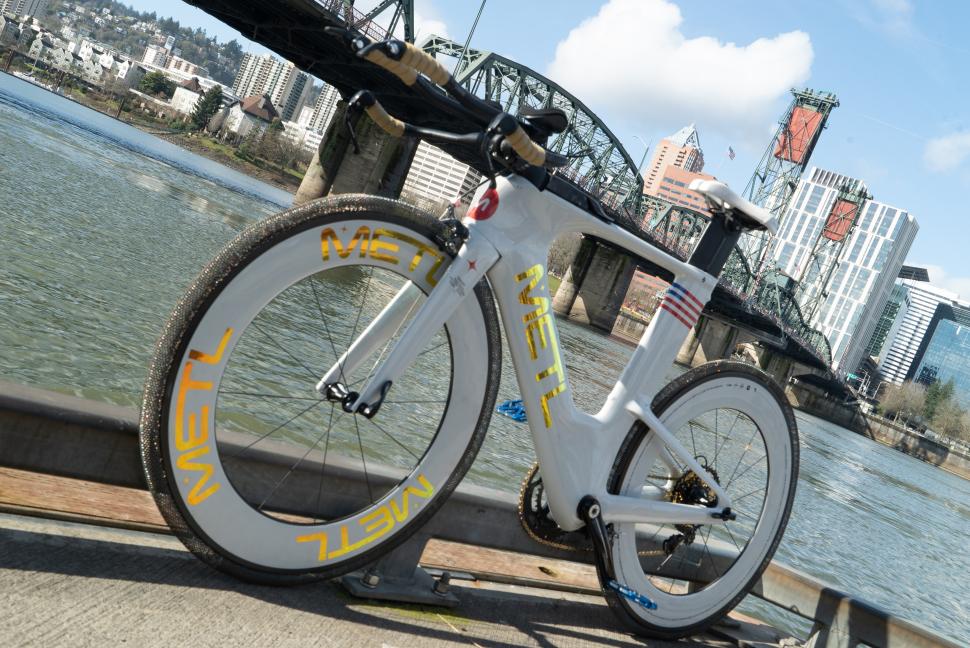
The SMART Tire Company says that the tyres use the same airless shape memory technology that NASA used for the Superelastic Tire on Mars Rover missions to eliminate the possibility of punctures. They’re ‘Designed for Mars. Ready for Earth’. Great tagline.
> Vittoria launches run-flat Air-Liner inserts for road bikes
The tyres are made from advanced, lightweight material known as NiTinol+ (nickel titanium), which the company claims allows them to be elastic like rubber but as strong as titanium. This means that they will hold perfect shape memory without going flat, while still ensuring a smooth ride. There’s no need for tubes or regular maintenance.
The SMART Tire Company says “the final product will be integrated with a special poly-rubber material for the longest-lasting tread and grip, for all weather conditions”. The tread will be replaceable and the tyres will retail for around $100-$150 (£85-£125).
8. Bianchi launches the most un-Bianchi Bianchi ever
You remember the launch of the Bianchi Oltre RC? No? The bike with the Air Deflectors on the sides of the head tube. Now you do. Loads of you commented on this story and it’s fair to say that the reception was… frosty.
Bianchi unveiled three different levels of Oltre, the top-level RC coming with the Air Deflectors, the Oltre Pro and the Oltre (with no suffix) coming without.
“[We] designed and integrated Air Deflectors (patent pending) into the sides of the head tube, thus channelling airflow and creating a low-pressure zone at the rear of the tube,” said Bianchi.
“The action of the deflectors complements the performance of the new aero cockpit, which generates low-pressure air vortices directed towards the legs of the moving athlete through a centrally located hole.”
Okay, but the UCI was having none of it. Those Air Deflectors are classed as fairings and have to come off for UCI-sanctioned racing.
7. Shimano patents handlebar with integrated Di2 buttons
We spend a ridiculous amount of time scrolling through endless patents in search of The Next Big Thing in Cycling, and most of them are absolute tosh that’ll never see the light of day in a million years. Just occasionally, though, we stumble across something we’d really like to use, such as this Shimano handlebar design with Di2 switches recessed into the top sections.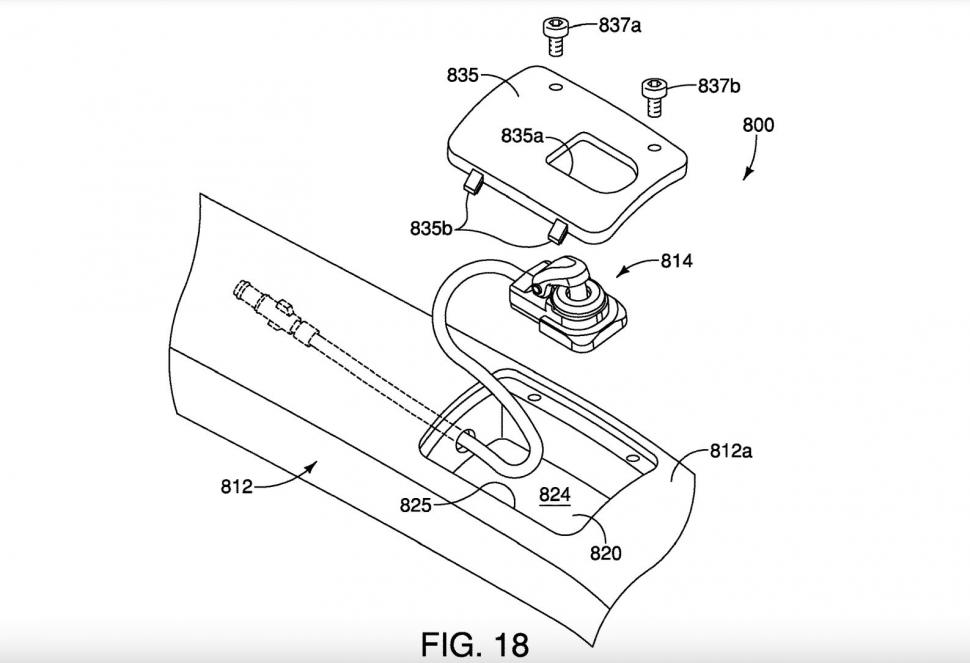
With Shimano’s new handlebar design, the switch is positioned at least partially internally, and is partly covered “to provide a visually pleasing appearance”.
> Check out the best road bike handlebars 2022
Who doesn’t like a visually pleasing appearance? Shimano suggests that the switch could be operated through a flexible cover that keeps water out. Even better.
It might never happen, but we like the sound of it.
6. Would you fit a selfie stick to your bike?
Believe it or not, Insta360’s Third-Person Bike Handlebar Mount – which allows you to fit a camera to the front of your bike and capture footage of yourself and your surroundings as you ride – was the subject of one of our most popular tech stories of 2022. More of you read about a selfie stick than anything from Specialized, for example. What a vain bunch!
Essentially, you mount a camera on a stick that extends out in front of your handlebar. An Insta360 ONE X2 camera, for instance, has two lenses that each capture a 200° view.
> Is the Insta360 GO 2 a good camera for cycling?
“Then Insta360’s proprietary algorithm stitches the images together, using the overlap between the two to hide the extension pole,” says Insta360. “This is all done automatically so when viewing the shots in the Insta360 app, it’s just the rider and the world around!”
> The best camera for cycling? Insta360’s new ONE RS now has built-in stabilisation
The Third-Person Bike Handlebar Mount is available for £41.99.
5. Brompton releases its lightest bike ever
British folding bike brand Brompton unveiled its lightest-ever model back in January. The new titanium Brompton T Line is available in singlespeed or four-speed versions, the lowest-weight option being just 7.45kg. That’s pretty damn light when you consider the tech involved in making a folder. Strong, durable hinges aren’t light, you know.
“At the new facility in Sheffield, the frame is precision-engineered in titanium, then orbital and tig-welded for strength,” said Brompton. “The T Line is comparable to a carbon road bike, yet, it can be comfortably ridden by a 110kg rugby player and withstand the punishing impact of the city.”
> Check out our review of the Brompton P Line Urban
It features a patent-pending drivetrain that sits inside the fold, including a carbon chainset, so you can be the coolest kid on your commute.
The initial Brompton T Line bikes (£3,750 for the single-speed version, £3,950 for the 4-speed model – are sold out but you can sign up for the next T Line release here.
4. Do you remember the Mips versus Kask safety spat?
Oh crikey! I thought we’d heard the last of this one. Okay, so you know that Mips (Multi-directional Impact Protection System) has been an ingredient brand for helmet manufacturers for years, providing systems designed to protect your brain from injury in the event of certain types of impact?
Italian helmet brand Kask rejects the need for MIPS and has recently introduced its internal testing, which it calls its Rotational Impact WG11 Test. Kask presented its reasoning to us, which you can check out here. I'll warn you, though, you'll need to get yourself a cup of coffee first because there’s a lot of detail… a fair amount of it about the head forms used in testing. And committees. You've been warned.
> Kask WG11 vs MIPS: which cycling helmet technology is best?
Anyway, that got Mips’ back up and the Swedish company defended the efficacy of its helmet safety system, saying that its test methods meet the highest scientific standards and that its results are based on the most realistic head form currently available.
Did we reach a resolution? Nope. We might get some sort of agreement when CEN – the European Committee for Standardisation – introduces a rotational impact testing requirement for bike helmets. When will that be? Nobody knows for sure but I hope it’s soon because all this squabbling is harshing the vibe.
3. Behold, the half-wheeled bike!
Sometimes – as with that Kask feature, above – we spend a lot of time visiting labs interviewing engineers, reading scientific papers, and generally digging deep into the research before crafting a feature that addresses a lot of pertinent questions. And then that feature will get its ass kicked in terms of traffic by a video we saw on YouTube.
It pains me to share it again.
2. Trek’s new Madone SLR: the hole story
We were walking along minding our own business just before the start of the Criterium du Dauphine when Jasper Stuyven pedalled past on his way back to the Trek-Segafredo team bus riding a previously unseen Trek Madone SLR with a huge hole in the seat tube. We set off in hot pursuit.
A zillion photos and an hour later and we were able to present a world exclusive (until everyone else jumped on board) on the new bike. Go road.cc! All those air miles and nights in cheap (and sometimes smelly) hotels pay off sometimes.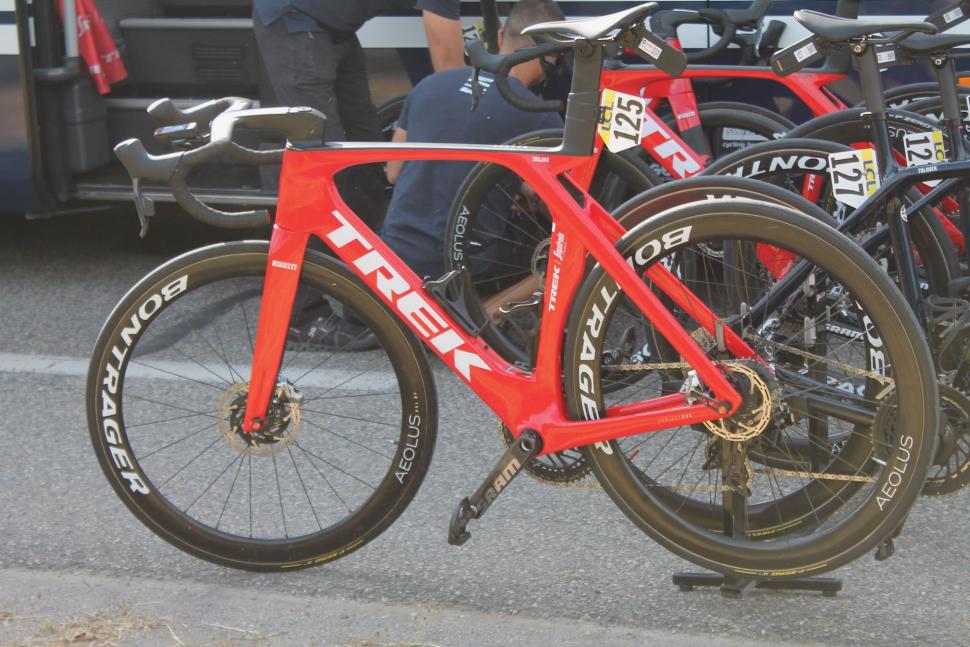
Trek launched the bike a month later telling us that the IsoFlow technology – that hole has an official name – provides dramatic aerodynamic improvements while reducing weight compared with the IsoSpeed system used on the previous Madone.
Naturally, Trek made a whole bunch of claims for the new bike that we can’t check, chief among them being that the new model is 60 seconds per hour faster than the previous generation thanks to the new aero frame shaping, a redesigned bar/stem, and a more aero riding position (see our original article for details on that claim). 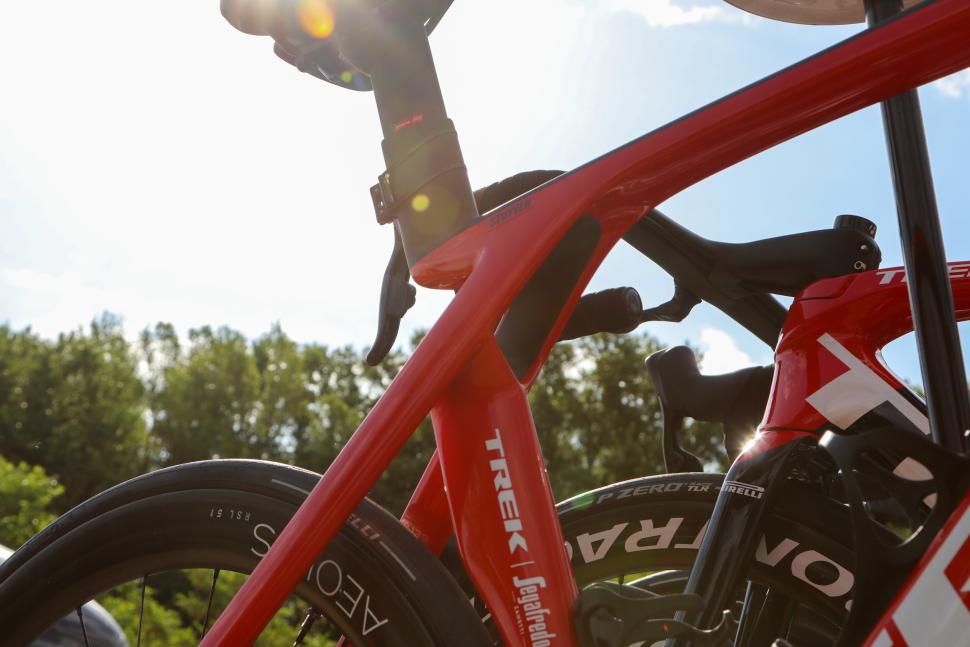
Trek’s new design is so far seen only on the Madone SLR. We wonder if IsoFlow will be extended to the Madone SL in 2023.
1. Shimano 105 groupset goes electric
Shimano 105, reportedly the world’s most popular groupset, joined its siblings Dura-Ace and Ultegra in making the switch to electric shifting in 2022. It became 12-speed and disc brake-only too.
We spotted user manuals for both the dual control shifters and the rear derailleur back in mid-June and Shimano officially launched the new groupset a fortnight later.
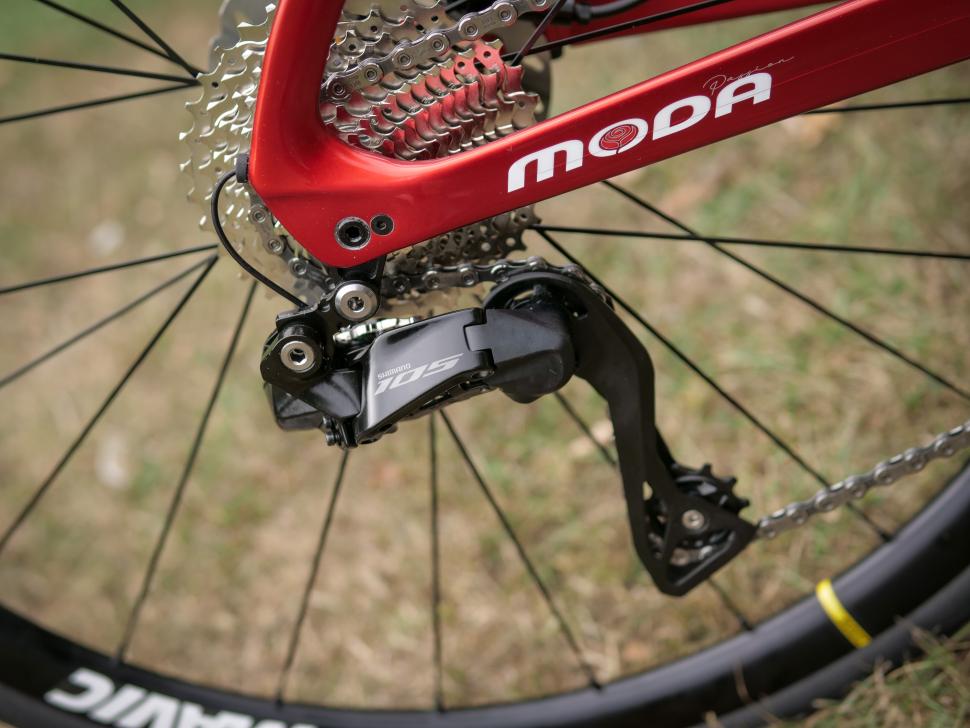
> Check out our Shimano 105 R7100 Di2 Groupset review here
It was a huge update for 105 with loads of tech trickling down from the higher levels. Unfortunately for some, mechanical shifting and rim brakes weren't invited to the party.
We’ve been hugely impressed by Shimano 105 R7100. The shift quality is excellent, the braking is powerful, and the gap in performance to the more expensive groupsets in Shimano’s range is small. We’re big fans of the new generation.
What were your favourite cycling tech stories of the year? Let us know what you think has missed out in the comments.
Mat has been in cycling media since 1996, on titles including BikeRadar, Total Bike, Total Mountain Bike, What Mountain Bike and Mountain Biking UK, and he has been editor of 220 Triathlon and Cycling Plus. Mat has been road.cc technical editor for over a decade, testing bikes, fettling the latest kit, and trying out the most up-to-the-minute clothing. He has won his category in Ironman UK 70.3 and finished on the podium in both marathons he has run. Mat is a Cambridge graduate who did a post-grad in magazine journalism, and he is a winner of the Cycling Media Award for Specialist Online Writer. Now over 50, he's riding road and gravel bikes most days for fun and fitness rather than training for competitions.
Latest Comments
- cyclefaster 2 sec ago
I can see how the change to TNT is frustrating if you were just paying for discovery+ or the old gcn plus, but a lot of sports fans like myself...
- ceebee247 5 min 58 sec ago
But the issue with cycling is that the teams participating see none of this money. Football, cricket, golf all see money paid to players or teams...
- Bungle_52 11 min 12 sec ago
I do think we have to give the driver some credit for stopping, rendering assistance and calling the emergency services. If he hadn't stopped and...
- Matthew Acton-Varian 20 min 4 sec ago
It has more resemblance to GRX and MTB grouppos. Don't forget, the entire ecosystem across drop and flat bars is cross-compatible allowing for...
- OnYerBike 29 min 14 sec ago
Surprised you didn't take the opportunity to shamelessly plug road.cc's bike insurance comparison tool!...
- Psi Squared 35 min 45 sec ago
I have questions about the noise level and uncertainty in the measurements made in their wind tunnel, as well as how uniform the free stream...
- bensynnock 42 min 30 sec ago
I think to a lot of new cyclists Halfords seems a safe choice, as it's a brand they are familiar with and they know they can take it to be repaired...
- Paul J 47 min 26 sec ago
FLR Shoes are Israeli.
- mdavidford 48 min 6 sec ago
Fake news. The people of Wirral do not cycle
- mdavidford 1 hour 15 min ago
Does that mean he had to come back and do a time trial after his 100km of recovery?
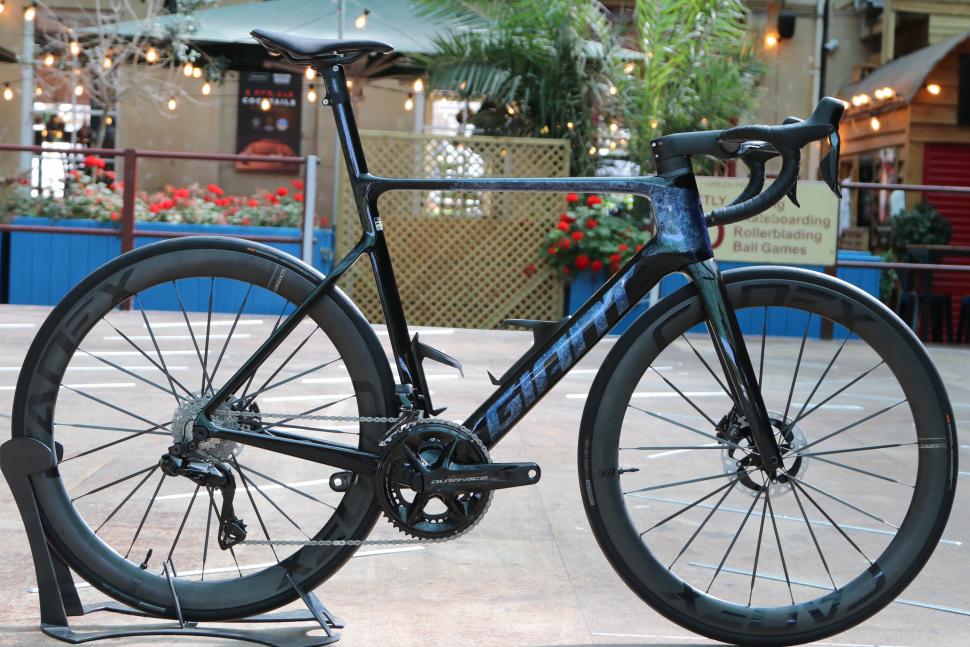
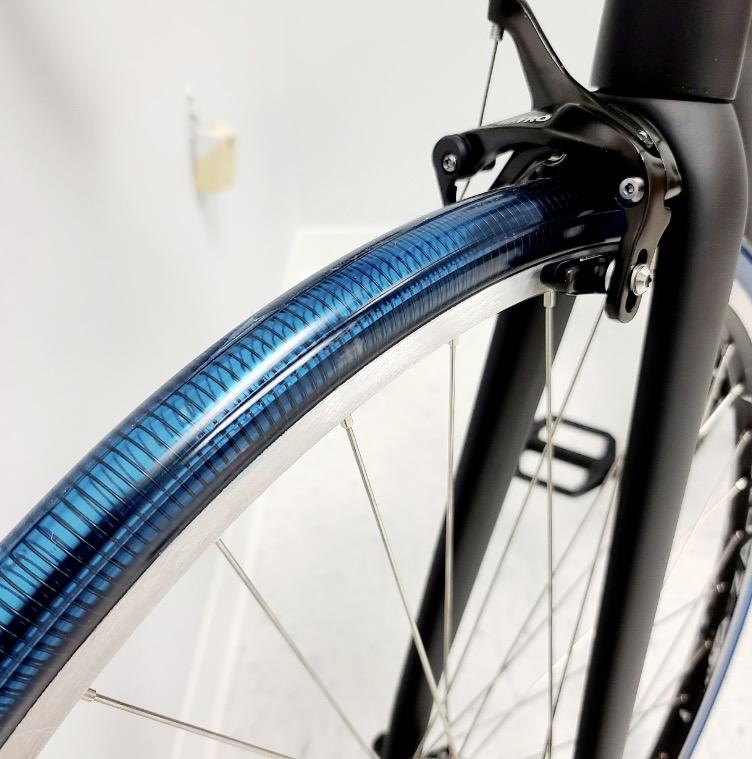
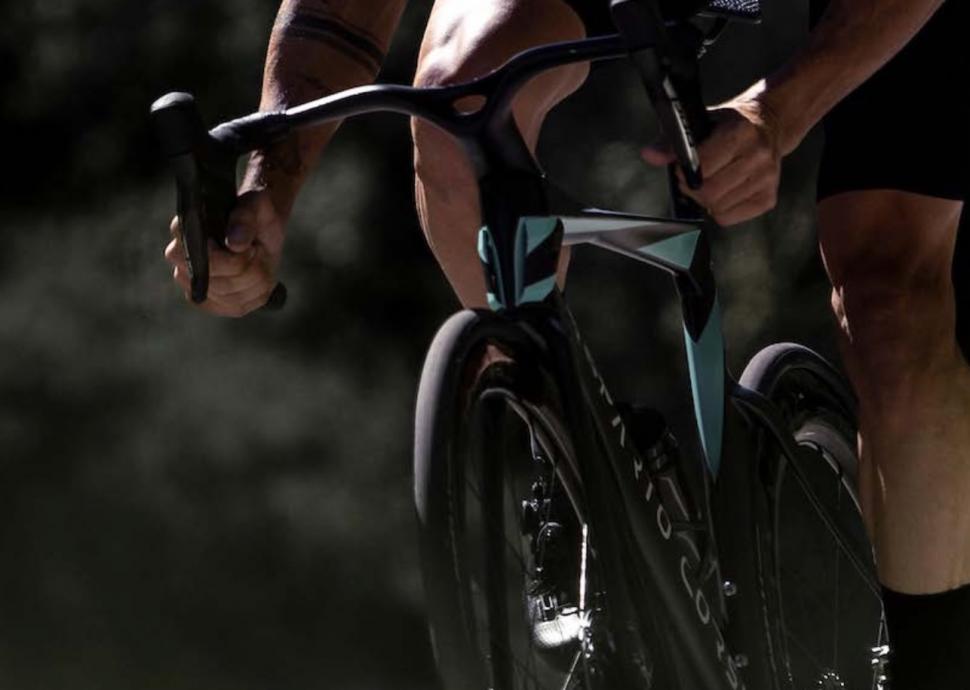


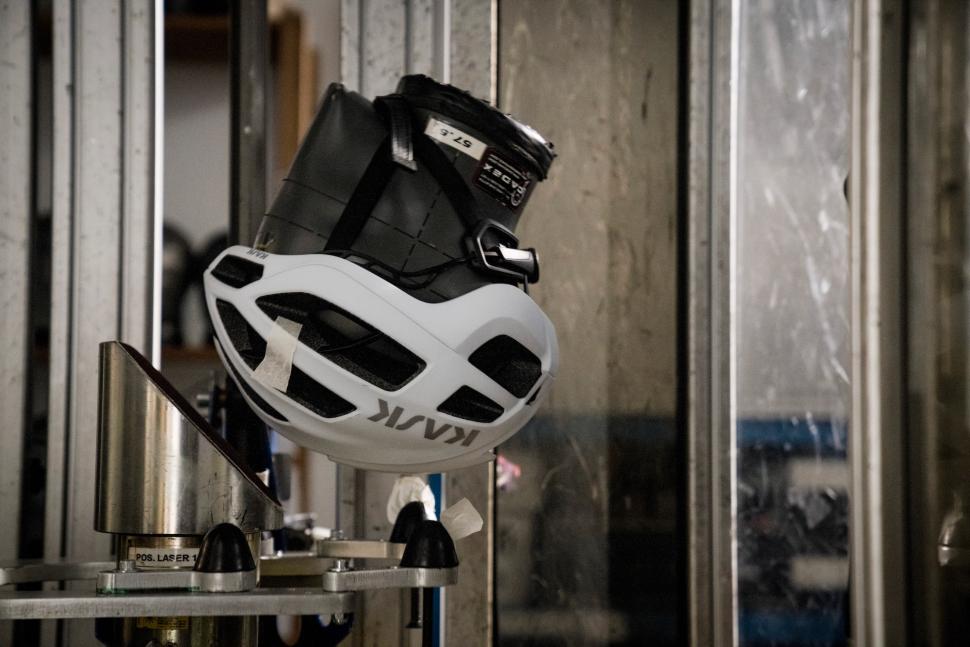
Add new comment
1 comments
Third most read story of the year on road.cc ... "Behold, the half-wheeled bike!"
Just be thankful they didn't write an article on the most commented stories!